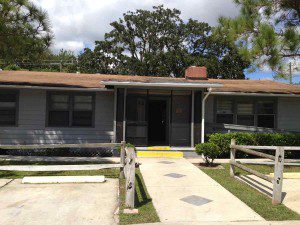
Tucked away on a dead-end street off U.S. Highway 17-92 in Sanford, Florida, sits an unimpressive collection of mostly corrugated structures, home to almost fifty men whom most in society would easily write off. But not John Hagan, President and Founder of Recovery House of Central Florida, a faith-based, therapeutic community, whose overarching goal is to reduce homelessness and addiction in Seminole County.
Once an alcoholic more than thirty years ago, Hagan, who hails from the north-east, embarked upon his life-long quest to give men suffering from drug and alcohol addiction, a second chance, as he got.
As Hagan tells it, “In 1987, I bought a couple of small houses in Sanford and began bringing men in to try to get them clean and sober. But we outgrew the homes and so this property, formerly a community center for many years, was purchased.”
Since its founding nearly three decades ago, thousands of men have passed through Recovery House and in the past 12 months, the facility has served over 320 men, placing them on a path to sobriety and job security.
“But the success of Recovery House would not have been possible without our faith-based approach which forms the core of the services we deliver,” he adds. “Each man’s relationship with God is key to their long-term sustainable recovery.”
Work, Structure and Faith – Keys to Recovery
Located on four acres of well-manicured grounds at 591 Lake Minnie Drive, Recovery House was designated a 501 (c) 3 non-profit organization in 2000. The facility is run by a 10-member board of directors which provides oversight and strategic direction to its work. It offers a drug-free environment and prospective residents commit to a one-year program, though the vast majority of men leave to take up jobs well before then. Many stay a few days and about 16% stay at least 90 days.
Built around a peer-driven model, elements of the one-year, 12-step program include, individual and group counseling, addiction education, relapse prevention, case management and 12-step recovery groups.
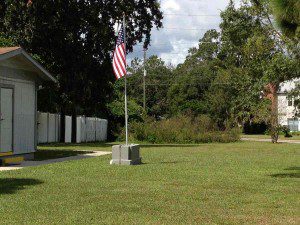
“Our program is peer driven and if the guys are learning what is being taught, which most do, they are assigned a little brother,” Hagan said.
Upon entry, the men begin a very structured program, of which work is a major part. The program focuses on education, job skills and vocational training to help develop effective social skills and, as the men progress that structure is reduced and leadership roles are embraced. The overall goal is to re-establish healthy functioning behavioral skills and values, as well as increased levels of responsibility.
For the first 90 days, the men undertake a variety of in-house tasks, after which Recovery House provides assistance in finding jobs outside the facility. Hagan says, over the many years, men with a plethora of skills, including masons, roofers, carpenters, painters and mechanics, and from various professions, such as legal, financial and accounting, have come to Recovery House.
“They come from ‘Yale’ or jail and every man adds value and makes a significant contribution,” he said.
Although a drug free environment is promised, on occasions there have been breeches. Random drug testing is done regularly and rooms are inspected, and when a violation occurs, it is dealt with swiftly and forcefully, Hagan says. Under such circumstances offenders are disciplined and receive counseling, but if severe enough, individuals could be asked to leave the program.
Recovery House has developed close ties with Aloma Church in Winter Park, where the men worship and Celebrate Freedom, a support group, that helps meet their mental and emotional needs, connecting them to God, growth and the Ministry. Hagan admits though, it wasn’t easy finding a fit between “recovering addicts and a ministry ready and willing to embrace them.”
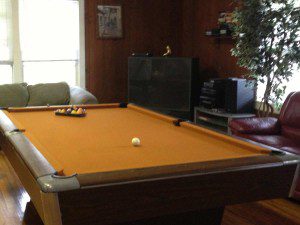
Edward W. Wyka, Senior Attorney Liaison for Attorney John Brennan at Dan Newlin & Partners, should know a thing or two about this. For nearly two years, as a member of Celebrate Freedom, he has been counseling and administering to the recovering addicts, at Aloma Church and Recovery House, on a weekly basis.
“I have learned so much about the ugly side of drug and alcohol addiction and the cycle of destruction,” said Wyka, who went through training to become a small group Challenge Leader. “I can tell you story after story of lives destroyed and Recovery House has given these addicts, in some cases, their last chance.”
Wyka adds, “Nobody takes that first drink or that first drug with the expectation that their life and the lives of all who love them will be shattered. It just happens one drink, one hit, one bad choice at a time and before they know it they are owned by it.”
In their own words
As the epidemic of prescription drugs swept across the country, eventually making is way to Florida, overtime the population at Recovery House has changed. In the early days, men who came to the facility were older. Today, about half of its residents are between 20 to 30 years old.
“The changing population at Recovery House has presented new challenges, as the younger men are more difficult to manage,” said Hagan. “But we try to team them up and let the older men take care of the younger ones.”
31-year-old Jimmy, an auto-mechanic, who entered Recovery House in early August, says, he has been drinking alcohol since he was about 10 years old. He is convinced that the structure, companionship, mentoring and peering up with an older house mate, one of the hallmarks of the facility, has been very good for him.
“I have met men with similar problems as I have and it has been great interacting with them, hearing their stories and learning to become a better person,” he said. “I especially like attending church on Sundays and Tuesdays and everybody keeps sober.”
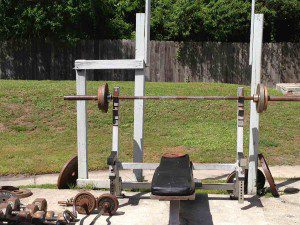
Roberto Rijos, 56, talks excitedly about pursuing a HVAC course at Seminole State College in the summer of 2014. He missed the deadline for applications this year. Born and raised in New York City, he came to Sanford in 1998. He is twice a graduate of Recovery House, having done first 12 months and again six months, after a relapse.
“Recovery House gave me an appreciation of values and an understanding of my relationship with Jesus Christ,” said the former alcohol and heroin addict. “People are in need of God and upliftment and I am one of the fortunate ones.”
A plumber and carpenter by trade, Roberto, who came to Recovery House via the Orange County Jail, where he served 3 months on charges of drug possession, now leads spiritual classes and serves as a role model to others. Family involvement, which is strongly encouraged at Recovery House, has been very important in helping with his recovery, he said.
A major anchor for the men is their ability to work at the facility or outside. The vocational training they receive teaches new job skills and a renewed work ethic which aids in productivity and ongoing self-sufficiency. After 90 days, almost all the men work in jobs outside Recovery House, contributing $150 per week toward a “program fee.”
Richard Moore, who will soon turn 67, is one who works on the inside. And according to Hagan, “a better laundry man you will not find.”
Addicted to alcohol for close to 40 years, Richard was virtually plucked from nearby woods. He credits Recovery House and Hagan with saving his life. Sober now for 3 1/2 years he enjoys special privileges, like his own room, in a trailer-type house, where he lives permanently.
“I would not be alive today were it not for Recovery House and the kindness and generosity of Mr. Hagan,” he said. “Almost all of my family are dead – they were all alcoholics.”
Recovery House – Doing the Impossible
Turning around the lives of men who struggle with drug and alcohol addiction is what gives Hagan great satisfaction. But it has been a heavy lift over the past 26 years, and increasingly so.
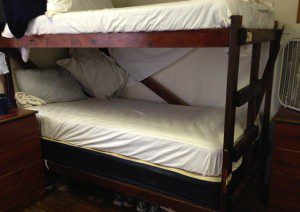
Recovery House receives no state or local government funding and meets its expenses from “program fees” contributed by the men who receive services, donations and in-kind contributions. If accepted into the program, no man is turned away on account of their inability to pay.
A number of partnerships have been developed overtime, including with the Seminole County Sheriff ‘s Office and there’s a Memorandum of Understanding with Seminole Behavioral Healthcare (now Aspire Health Partners), where treatment and behavioral health care services can be accessed on an “as needed” basis.
A clinical psychologist, Dr. Robert Tango, who has had a 20-year relationship with Recovery House, also provides services on a weekly basis.
“Overtime, we have helped thousands of men who have struggled with substance abuse disorders, doing so within our own budgetary constraints,” said Hagan. “But there’s a lot more we can do, if we did have the requisite resources.”
Recovery House is at a cross-roads in its development. A new 5-year strategic business plan, which will fully articulate the needs and services, as well as operational and capital requirements, is currently being developed. In addition, discussions are underway on a new 80-bed facility located at 500 Holly Avenue, to help ease the over-crowding and less than adequate residential living arrangements.
Self-sacrificing, volunteers and do-it-yourself solutions have enabled Recovery House to accomplish great things, but it is clear that substantial investments in infrastructure and facilities will be needed, if long-term sustainability is to be achieved.
For now though, Hagan, a tireless advocate, will continue to do what he does best: provide housing, structure and support to men who have known a life of addiction, in their transition to one of active employment.


